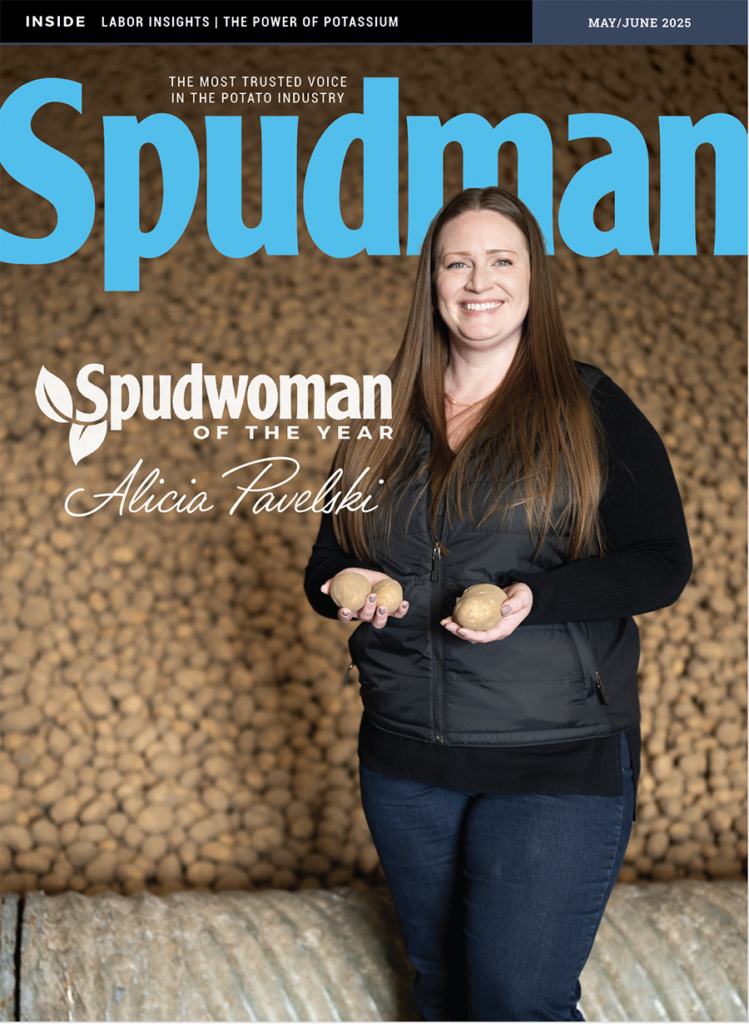
Colorado potato beetle research advances, but persistent pest continues to adapt
The Colorado potato beetle is a major pest throughout North America. Damage caused by the beetle can greatly reduce yield and even kill plants. For decades, researchers have been looking for ways to confer resistance to new varieties, and some are gaining ground.
In Canada, Helen Tai, research scientist at Agriculture and Agri-Food Canada (AAFC), is working to develop a more efficient way to select material to speed up resistance breeding.
For 30 years now, AAFC has been looking at wild relatives of potato from South America to find resistance traits. In the natural environment, there’s a lot of genetic diversity in wild species populations, including beneficial traits, and one of those traits is Colorado potato beetle resistance. Tai has worked with a number of researchers on this project, including Yvan Pelletier, a retired entomologist, and breeders David De Koeyer, Benoit Bizimungu and Henry De Jong, the breeder who brought in many of the diploid resources used in the research.
The varieties were collected in South America by the International Potato Center in Lima, Peru. The center maintains these germplasm resources for use in breeding. Some are conserved in the Andes where they are found by native communities. The U.S. Potato Gene Bank also collects resources. Both organizations were sources for the material used in this study, said Tai.
In the project’s early days, Pelletier took the wild species and put them out into fields in Fredericton, New Brunswick. “The thing about our location is that it’s infested with beetles,” Tai said. “So if you don’t spray with a pesticide in New Brunswick you will have very little yield. It’s a 30-to-50 percent loss in yield without the spray.”
Pelletier and his technician, Catherine Clark, did the laborious job of screening through the species to figure out which ones had resistance. They also conducted feeding assays in petri dishes. In total, they tested around 30 species, and found nine that had resistance.
“The challenge was then to get this material crossed with the domestic potato,” Tai said. “The problem with a lot of this wild material is that it doesn’t really make a lot of tubers.”
Most all of the tuber-bearing relatives of potato require short day length to make tubers. North American farmers grow natural variants that don’t require short days.
“What that meant was that nothing of the wild material made tubers when grown outdoors,” Tai said. “So you had to take this wild material that had your valuable resistance, cross it with the domesticated species, and then grow that material in a growth chamber with short day lengths so you can get the tubers,” she said. “And then you have to backcross until you can select away this short-day requirement for tuberization.”
Identifying ‘yucky’ leaves
Today, Tai is still working to cross varieties identified with resistance with domestic varieties. “My job was to develop a more efficient way to select material, so the next one doesn’t take 30 years,” Tai said.
What Tai found in the lab was that the domesticated species were producing material that beetles liked to eat, and she wants to know why. By looking at the leaf chemicals, she was able to differentiate between what she calls “yucky” leaves and “yummy” leaves. Using their chemical profiles, she was able to screen some of the newer material to see if the chemicals were present.
“In that way we would develop a screening strategy for Colorado potato beetle resistance without having to put the plants in the field all the time, and going through this long, laborious process of scoring the amount of leaves the beetles were eating,” she said.
Tai has since gone on to provide a genetic map of these “yummy” and “yucky” phytochemicals to determine which genes control their production. The advantage of having this information is that researchers are able to use it as a DNA marker, which will allow them to screen it along with other markers in a single go.
AAFC recently released varieties with Colorado potato beetle resistance. They grow nice tubers and get decent yields. Those varieties are currently available for licensing. Mechanisms for resistance can be stacked with other mechanisms to create a stronger, more viable plant. Different sources of resistance are needed because the genetically diverse Colorado potato beetle adapts quickly, Tai said.
Possible trap crops
In the U.S., Zsofia Szendrei, associate professor at Michigan State University, has also conducted research on Colorado potato beetle. She and her colleagues looked at wild potato species to see how the pest behaves on them.
“We have found interesting results where the females lay eggs on a wild species that was not suitable for the larvae to feed on,” she said. “It was sort of a dead end for them, and that was really interesting.
“We tried to look for chemical features of the plant that might explain why the females are attracted, but the larvae are not able to survive, but whatever we looked at did not explain this unusual response,” she said.
Understanding why females are attracted to varieties that don’t provide feed for their young has its advantages, Szendrei said, pointing out that there’s potential to use those varieties as trap crops.
“We set up a choice test in this experiment where the cultivated potato and the wild potato species were present at the same time, and they chose this wild potato species over the cultivated potato, so you could technically try to do this,” she said.
Limited funding meant that Szendrei and her colleagues were not able to conduct the choice test in the field, nor was she able to continue the research. She would still like to explore the question more in the future, though, as she believes the results have value for U.S. potato growers.
RELATED: Colorado potato beetle genome gives insight into pest














